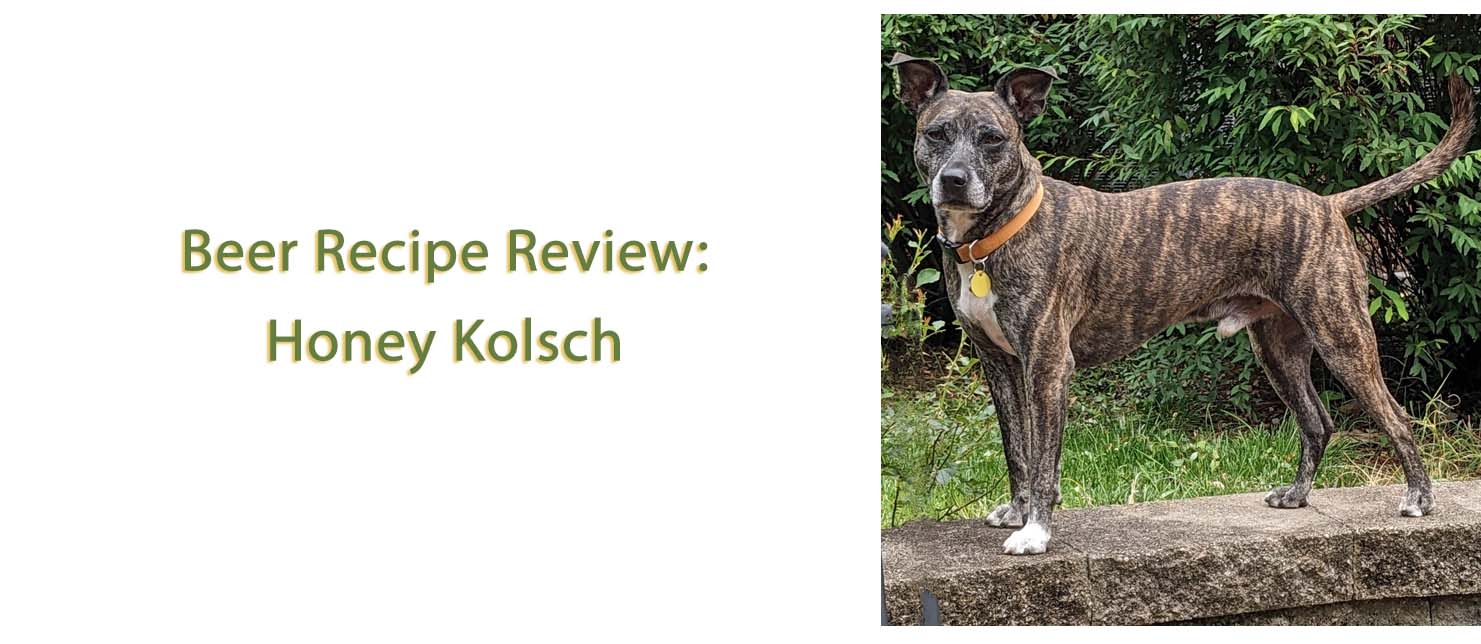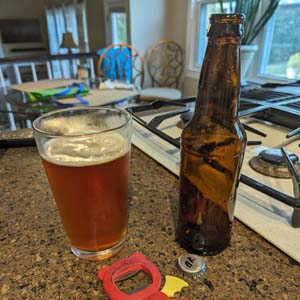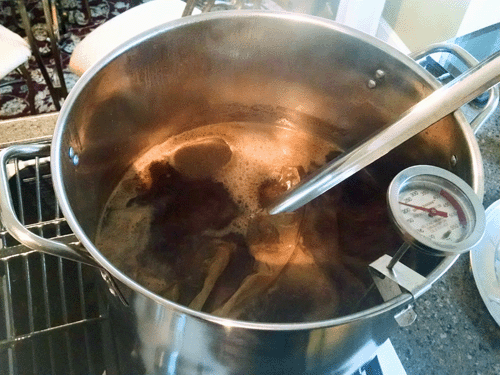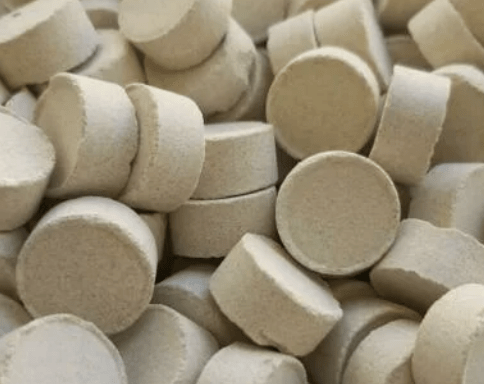
Last Updated on May 7, 2024 by Doug Hall
Okay, so what does a dog have to do with a Honey Kolsch recipe review? Good question, thanks for asking.
Kolsch is my favorite beer style. It is crisp, dry, and malty and it is on the lower end of the alcohol spectrum, usually around 4.5% ABV. It’s an easy-drinking beer that works well in all seasons.
I like Kolsch so much, I named my dog after the style. Meet Kolsch, a 6-year-old mixed breed I adopted from the local Humane Society.
One morning, he crawled out from under the sheets and, as he yawned, it sounded like he said mango. Bam! A Mango Kolsch. It has become a summertime favorite. You can read our latest review of our mango Kolsch recipe here.

Back to the Honey Kolsch. We bought the Liquid Malt Extract (LME) recipe from Northern Brewer. It is not the first time we have brewed this recipe but we did change the usual yeast we use.
We made it for the first time with the Lalbrew® Köln – Kölsh Style Ale Yeast. A slight upgrade in cost but we wanted to try the true yeast for the beer style. Spoiler alert, it was worth it!
Adding the yeast and a 5-ounce bag of priming sugar (Dextrose), our total cost was $41.97. That’s an average of $0.87 per bottle.
The Honey Kolsch Recipe Included:
- 6 pounds of Gold malt syrup
- 1 pound of wild clover honey
- 2 ounces of Vanguard Hops
That’s it! This was a Recipe to make 5 gallons. No steeping grains. As usual, I had 3, 1-gallon filtered water jugs chilled in the fridge.
Before I started the brewing process, I worked on creating a yeast starter. I have a beaker and stir plate. Sanitizing everything, I boiled about 150 ml of water in the beaker using my microwave. I cover the beaker with the foam stopper that came with it (also sanitized) and let it cool while I get everything going for the recipe.
I started with 2.5 gallons of tap water in my brew pot. Remove the kettle from the heat once it boils and stir in the malt syrup.

Get it back to a boil and add 1 ounce of the hops. The other ounce goes in with 30 minutes remaining in the 60-minute boil. At this point, the water in my beaker should be cooled off enough to add the yeast. Sanitize the scissors and yeast packet, I add the yeast. Using the stir plate, just give it enough of a spin to get all the yeast suspended in the water and stop, Just leave it alone for 15 to 20 minutes. I’ll stir it up again and then let it sit for 15 minutes. Stir it up one final time before pitching.

I have a stash of Whirfloc tablets (A blend of Irish moss and purified carrageenan that help precipitate haze-causing proteins and beta glucans.). I’ll add half of one tablet with 5 minutes left in the boil.
At the end of the boil, add 1 pound of honey.
Then, I go through my normal ice bath, chilled water cooling routine. I get everything poured into the primary fermenting bucket, add chilled water to get the volume just past 5 gallons, and add the yeast starter.
Seal that bad boy up, and put it in a dark room that keeps a relatively steady room temperature. The yeast recommends a range between 59 and 74 degrees. My coat closet in winter keeps a steady 65 degrees, which is perfect.
Within 6 hours the bubbling started in the airlock. It was pretty active. I believe creating a yeast starter helped. Active fermentation was done in 6 days. I left it in the primary for another 13 days to allow all the yeast to settle and help clarify the beer.
I don’t know if it is because I prefer liquid versus dry malt extract but this Honey Kolsch recipe came out a bit darker than the image on the website.
Before bottling I took a final gravity reading. This batch came in at 4.8% ABV. I think the honey addition at the end of the boil gave the yeast a little more sugar, bumping up the ABV just slightly compared to other Kolsch recipes I have made.

After 3 weeks of conditioning in the bottle (I cheated after 1-week & it was awesome), I got the gratifying woosh from popping off the cap, and I poured my new creation into one of my iced-down pint glasses. Golden color, darker than the blonde color from the recipe page on the website. Good head smells great.
Compared to other Kolsch recipes I have done, this was much more drier and a bit more bitter. I usually use SafAle US-05 which has provided great results. Upgrading to a true Köln yeast made this a refreshing beer with a good balance between maltiness and hops.
It is amazing how much difference yeast can make in the final product. Anyway, I ended up with exactly 2 cases, 48 beers.
Okay, I could have bottled 2 more but it was a judgment call. There was a fair amount of sediment that had transferred over when I racked the beer into my bottling bucket. Sometimes I’ll mark those caps with an asterisk. This time I just decided to drink what was left in the bottom of the bucket. I was kind of surprised when I still had a little bit left after my second glass!
- Belgian Amber Ale Recipe Review - May 14, 2024
- How to Choose the Right Beer Glass - May 14, 2024
- 2024 Top Beer Delivery Services - May 10, 2024

Loved the background info, as well as the picture of your pup Kolsch, and the process for creating your brew. Excellent details for homebrewing of a new beer.
Thank you so much for your kind words and support.